Everest High Passes Trek : A Thrilling Adventure Experience in Everest
Treading the mountains is something you would admire. No matter how hard it gets, there is no threshold to exquisite beauty.
Treading the mountains is something you would admire. No matter how hard it gets, there is no threshold to exquisite beauty.
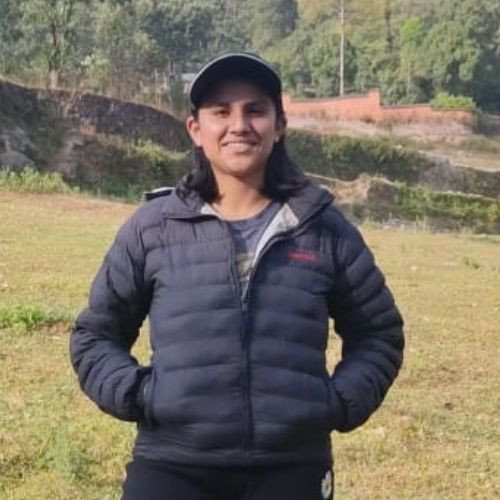
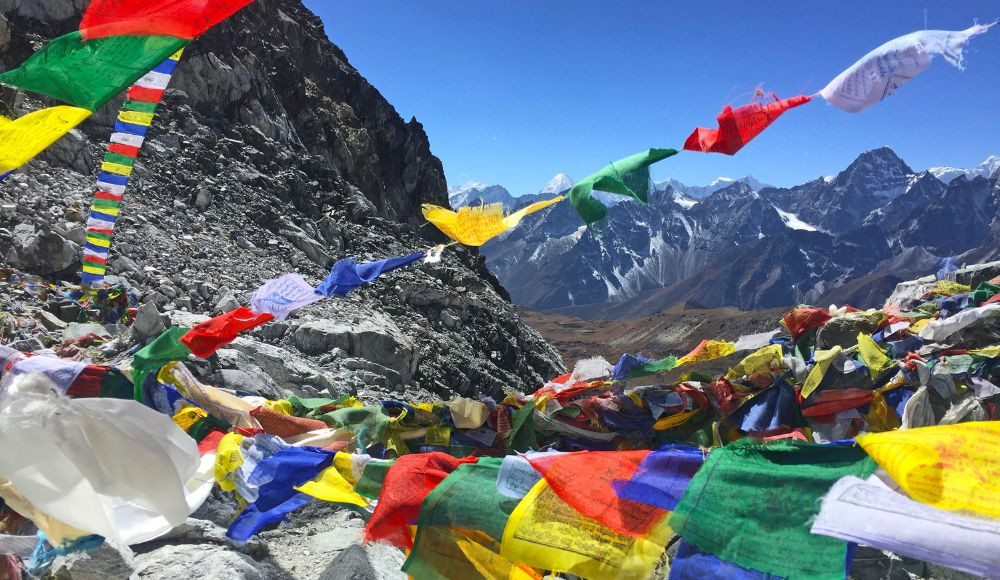
Nepal’s mountains are not only beautiful but they are also railed by world-class hassle-free trekking standards.It might be one of the Everest high passes trekking zones. The Himalayas are the world's highest range, and everything from weather to topography to religion and trade is defined by them. It's a garden with the most spectacular mountain scenery you'll ever see.
What is your favourite activity? Is it climbing Mount Everest? Do many trekkers have this on their bucket list, or is it a must-do for them? It's one of the more thrilling treks. The Everest high-passes trek route has attracted a lot of hikers.
This trek might be a new experience for you, whether you're going from base camp to the remote region of Gokyo Lake or if you're doing it in reverse. The tramped route may be different than what you're used to. A journey into the centre of Nepal's tallest mountain range and seeing locations with the locals will boost your adrenaline.
Everest high-pass trek is an amazing journey that takes you through some of the most spectacular scenery in the world. This trek takes you over high mountain passes and provides stunning views of Mount Everest, Lhotse, Makalu, and other peaks in the Himalayas.
Everest is greeted by breathtaking views of the snow-capped mountains. From there, the trail will take you through a number of Sherpa villages, each with its own unique culture and tradition.
As you climb higher and higher, the scenery will become even more breathtaking, with views of Mount Everest and the surrounding peaks. The final leg of the trek will take you over the Kongma La pass, where you will be rewarded with stunning views of the Khumbu Glacier. The Everest high-pass trek is an unforgettable experience that should not be missed.
The scenery is absolutely incredible, and it's an amazing feeling to be standing on top of one of the world's highest mountains. It is highly recommended to anyone who wants to experience the beauty of the Himalayas. The high-pass trek is an amazing journey that takes you through some of the most spectacular scenery in the world. The trek begins at Lukla, where you will be smitten by spectacular views of snow-capped mountains. The path will lead you through a number of Sherpa villages, each with its own distinct culture and custom.
|
Trek Duration |
17 days (6 to 8 hours of daily walk ) |
|
Trek Difficulty |
Strenuous |
|
Maximum Elevation |
5645 Meter (18513 Ft.) |
|
Best Time To Visit |
|
|
Major Highlights |
|
|
Trek Starting and Ending Point |
Lukla |
|
Trek Route |
Lukla - Namche - Tengboche - Dingboche - Chukung - Lobuche - Gorakshep - Kalapathar - Gokyo - Namche - Lukla |
Trekking is a highly addictive pastime for individuals attempting to start their mountain excursions. Consider consulting with an experienced trekker who has been to the Himalayas if you're thinking about doing it. This once-in-a-lifetime journey offers adventurers and dreamers.
The first approach is the eastern or Kangshung face of the mountains. The so-called modernity is gradually eliminating the lonely allure of distant valleys. There are lots of routes through, and they're both fantastic and hazardous. So you may be wondering where this wonderful trekking route will lead you.
The high-pass trek routes on Mount Everest go from Kongma La pass (5550 meters) to Cho La pass (5420 meters) before ending at Renjo la pass (5360 meters). This is the most notable section of this excursion. Kongma La is thought to be the most difficult, but you must cross glaciers when trekking to Cho la Pass. The Renjo La pass is considered the easiest of all the passes.
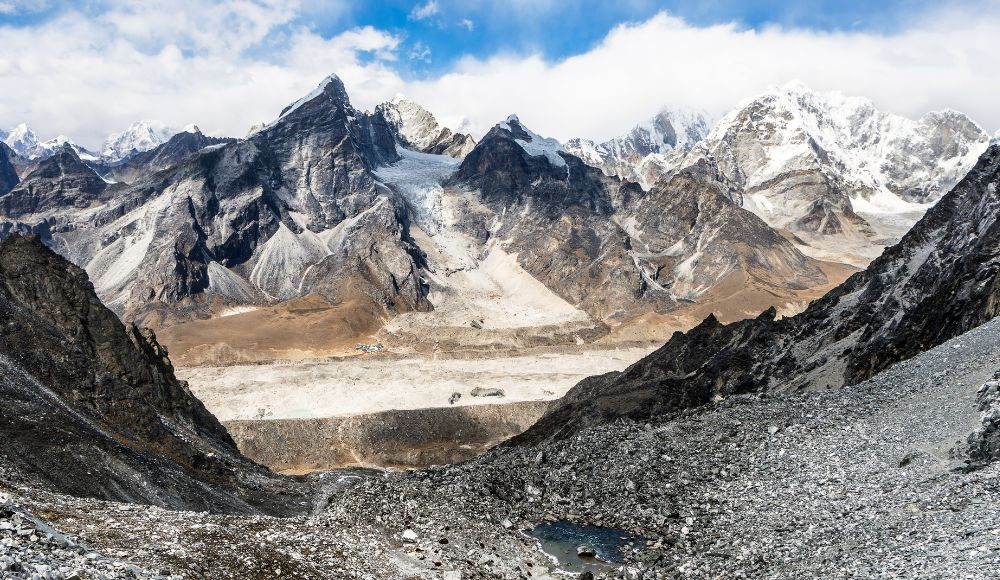
Namche is the starting point for this trek, which will take you through Gokyo and across Sagarmatha National Park to see all of its flora and fauna. The final destination is Gokyo, where the upper route leads to Gokyo Lake and the lower route goes to the lower Everest base camp. The mountain pass covered in blinding snow and draped in a delicate shawl between the peaks resembles a sparkling silk shawl draped over the cheadle.
The first step is to fly from Kathmandu to Lukla Airport. Landing at the world's most dangerous airport may raise your blood pressure. However, if you want to add another degree of difficulty and adventure, you might consider taking a bus or jeep from Kathmandu to Jiri. If you decide to trek further up the hill, stop one day at Salleri and hike towards Lukla. However, if you take a bus or jeep from Salleri or Phaplu, you can reach Lukla two days early because of Jiri.
The call of the mountains may be beckoning you. So plan to get out early in the morning. Getting a stunning view while chatting with pleasant locals. This is one trip you won't want to miss out on.
|
Day 1 |
Flight to Lukla and Trek to Phakding. |
|
Day 2 |
Trek From Phakding to Namche. |
|
Day 3 |
Acclimatization in Namche. |
|
Day 4 |
Trek from Namche to Tengboche. |
|
Day 5 |
Trek from Tengboche to Dingboche. |
|
Day 6 |
Acclimatization in Dingboche. |
|
Day 7 |
Trek from Dingboche to Chukung. |
|
Day 8 |
Trek from Chukung via Kongma La Pass reaching Lobuche. |
|
Day 9 |
Trek from Lobuche to Gorak Shep. |
|
Day 10 |
Trek from Gorak Shep to Kalapathar staying in Dzongla. |
|
Day 11 |
Trek from Dzongla to Chola pass reaching Dragnag. |
|
Day 12 |
Trek from Dragnag to Gokyo. |
|
Day 13 |
Gokyo Exploration. |
|
Day 14 |
Trek from Gokyo to Renjo la pass reaching Lungden. |
|
Day 15 |
Trek from Lungde to Namche. |
|
Day 16 |
Trek from Namche to Lukla. |
|
Day 17 |
Return flight from Lukla to Kathmandu. |
Nepal is a hiker's paradise with its many dramatic landscapes and towering mountains. The Everest high-pass trek takes advantage of this pristine terrain, offering hikers up-close views of some of the world’s tallest peaks including Mount Everest (29,029 ft). This strenuous but rewarding hike winds its way through the alpine.
So come rain and shine in the journey of marvellous and pleasant expeditions where the views keep getting better and better. The Everest high-pass trek can be done in around 17 days. Let me take you through the full detailed itinerary of the Everest high-pass trek.
So starting your journey you get to experience the most mendacious flight you have ever experienced. Taking a flight from Kathmandu to Lukla which is about 45 minutes will take you in the mountain laps. Observing the pleasant and scenic view you will reach Lukla where you will take all the required permits and then set off on your journey towards Phakding. After about 2 to 3 hours of trekking, you'll come to a tiny hamlet known as Ghat, which is approximately 6 kilometers distant from Lukla. Finally, you'll reach the village of Phakding, which is located south of Monjo. This is located at a height of 2610 meters.
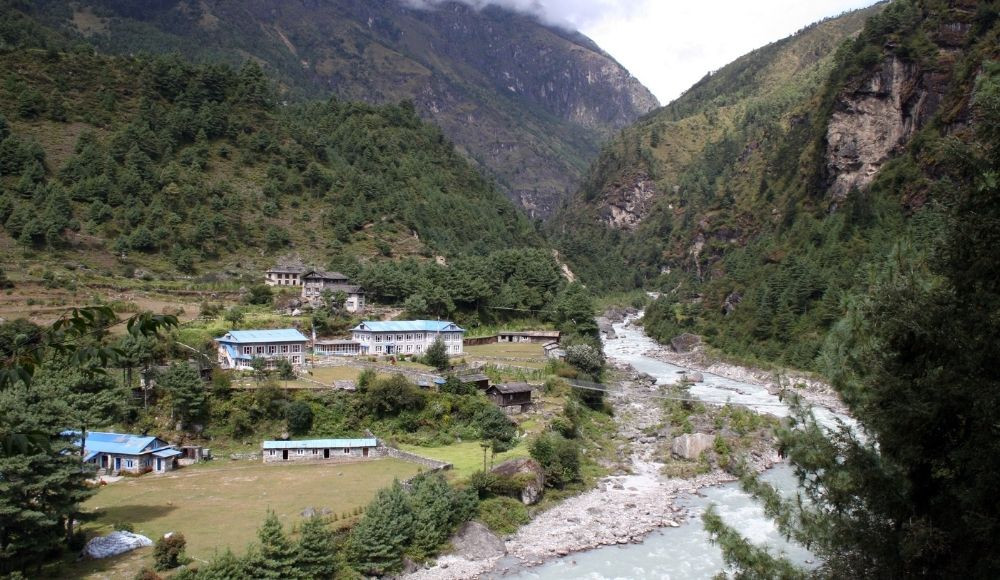
So after having your breakfast you will start your trek from Phakding to Namche. You will scale up at the elevation of 3500 meters(11482 ft). The trek is moderate in difficulty and includes spectacular views of inhospitable terrain, frigid weather, and human perseverance in high-altitude regions. You may be tempted to appreciate the beauty of it, which appears like a diamond in the Himalayas, as you are confronted with frozen water on your path.
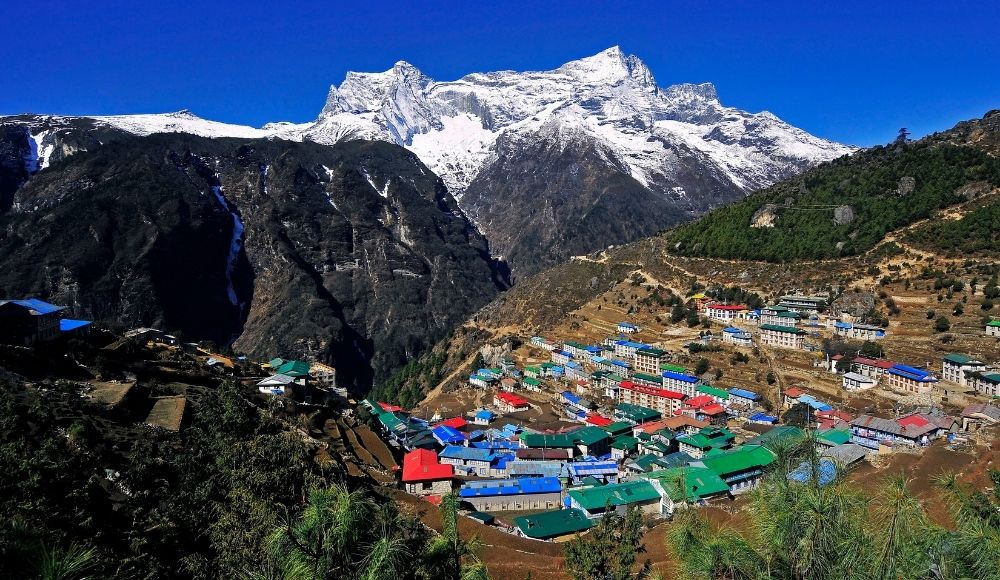
Hiking for a while and you will reach Monjo where you will take the required permit and set off your trail further taking you to a pleasant view of Sagarmatha National Park. Before reaching the steep trail of Namche you will have to cross Tenzing Hillary bridge. After crossing the bridge you will spot the first view of Everest from the Top Dada. Finally at last you will reach the Namche Bazaar. You will be staying at Namche for a night.
Today will be a day of rest and exploration in Namche. Namche is a lovely town located in the Khumbu region. You'll go on a short walk to the nearest Khumjung village, where you will enjoy the breathtaking scenery while being taken to the Everest View, which is also the highest-placed hotel in the world. The trek begins in the village of Shey and ends at Kanchenjunga Base Camp. You'll pass through Syangboche Airport on your journey. Unfortunately, the airport is currently closed, but you may explore it as you go.
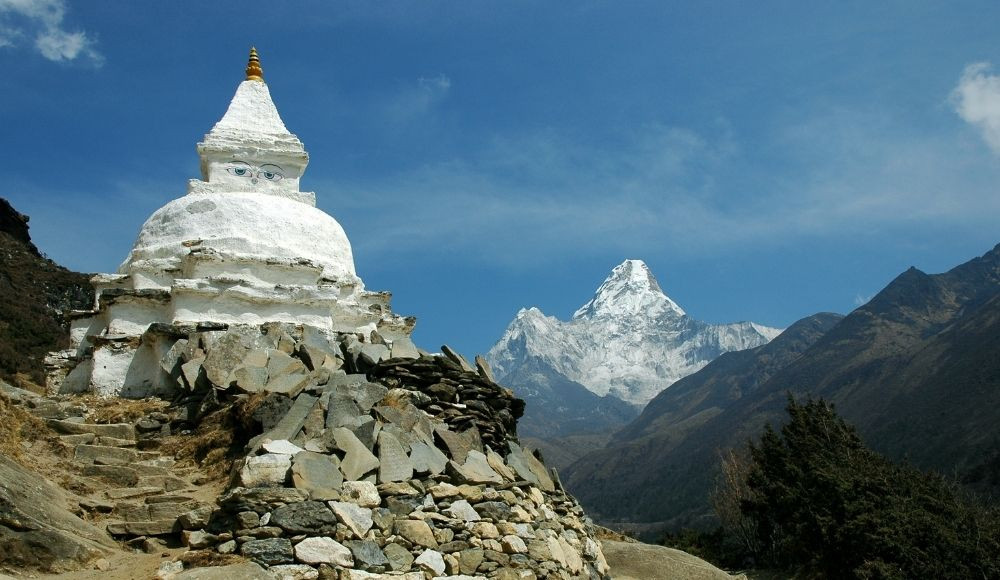
Today you will rise to the elevation of 3860 meters (12664 ft ) which will take about 6 to 7 hours of walking. Tengboche monastery is considered to be one of the best viewpoints of Everest. After crossing the suspension bridge over the Dudhkoshi river you will reach the Tengboche monastery which goes an extra mile. You may enjoy the view of Gokyo Lake, Kowche Tembo, and Phunki Gyachung Ri. Lhotse, Makalu Barun, Ama Dablam, and other peaks will provide magnificent vistas. The biggest monastery in the Khumbu region where monks will be praying in front of you, giving you a sense of peace.
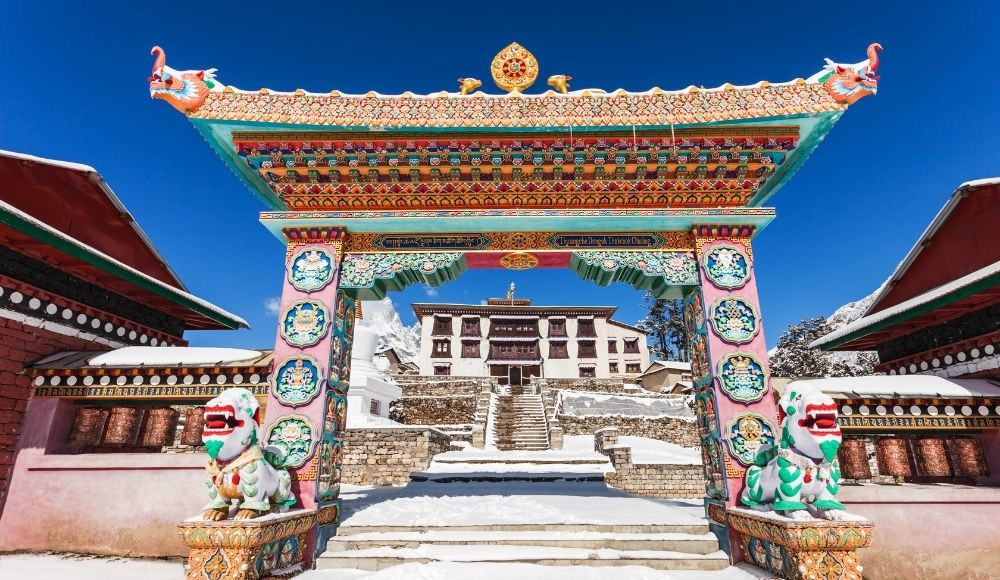
In the early morning you will start your journey on the dusty trails leading towards Dingboche. The altitude increases by 518 meters and the distance covered will be around 10 kilometers. You will take your journey through the trails slowly to make sure to acclimatize properly. Arriving at Dingboche you will observe some of the amazing solar technology as well. You will be staying there for the night.
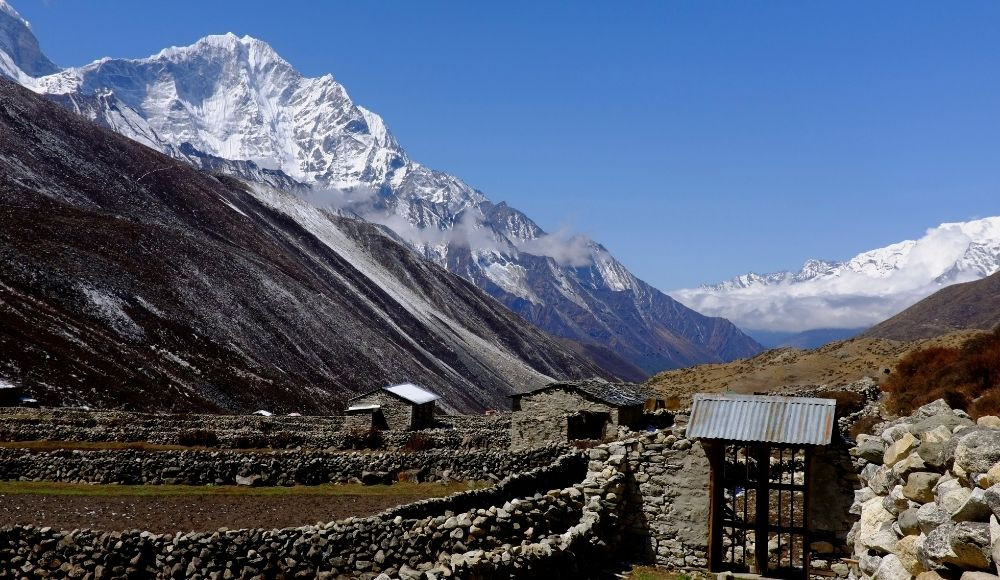
This is your second acclimatization zone. Today you will go on a short hike towards Nangkartshang. You will be hiking for two hours, scaling the elevation level of about 5073 meters. From getting the views much better which feels magical.
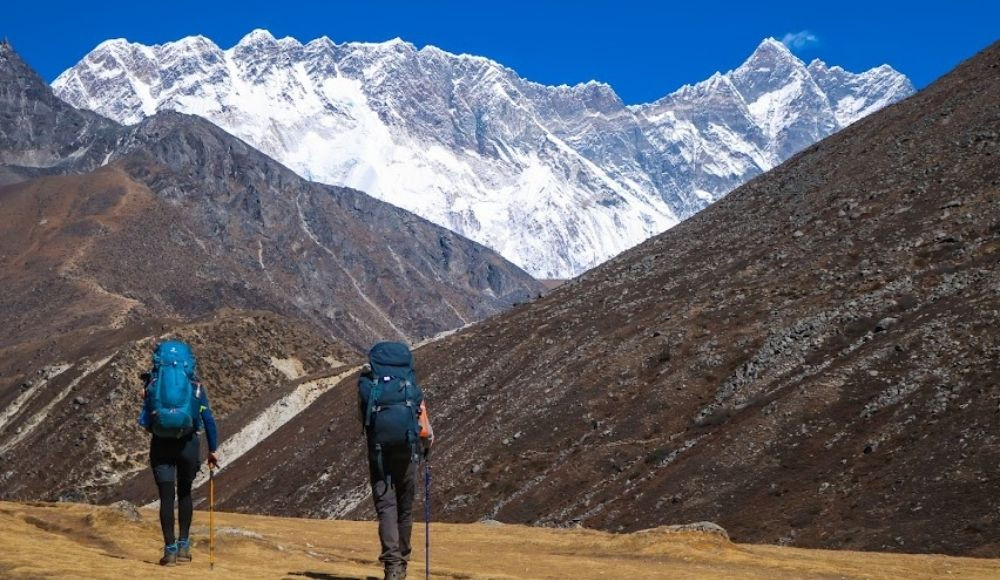
Starting your trek at dawn will gain you an additional 400 meters in elevation and a distance of 5 kilometres to beautiful Chukung village. During your path, you will be ascending towards Chukung Ri which is about 5800 meters where you will meet up with all the cairns at the top. This cairn looks really beautiful. You will stay overnight at Chukung village.
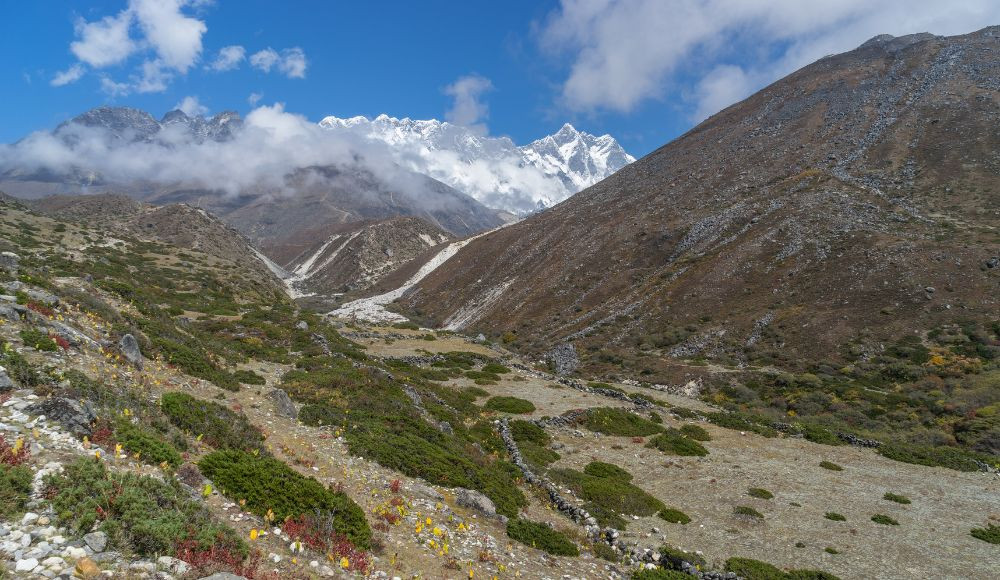
Today might be a hike of about 6 kilometers ascending an elevation of 210 meters , but you will be passing through Kongo la pass(5534 meters). It will take about 6 to7 hours of walking to reach Lobuche. You will be staying overnight there.
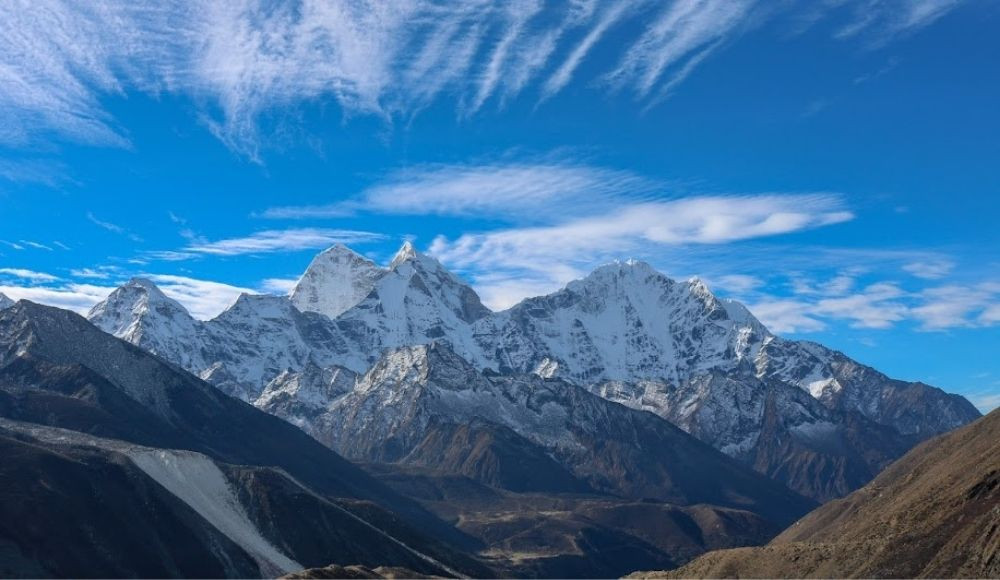
Early morning, have your breakfast and leave the beautiful Lobuche and head towards Gorak Shep. Today you will be ascending around the height of 220 meters going off the high passes and passing through the Everest base camp pathway. Reaching the Gorak shep you will march yourself further towards Everest base camp(5364 meters) along the frozen trails. You will return back to Gorak Shep where you will spend the night.
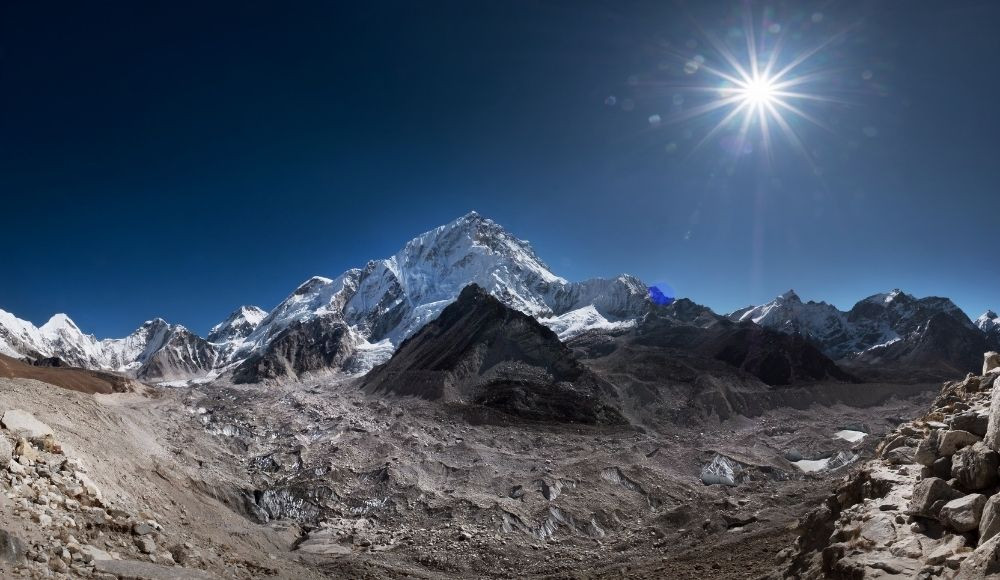
Next day you will start off with an early morning hike towards Kala Patthar. This is the best place to observe the 360-degree view of some of the highest peaks including Mt. Everest, Mt. Pumori, Mt.Changtse, Mt. Lhotse, and many more. You will be descending downward and following the glacial valley reaching Dzongla where you will stay overnight. 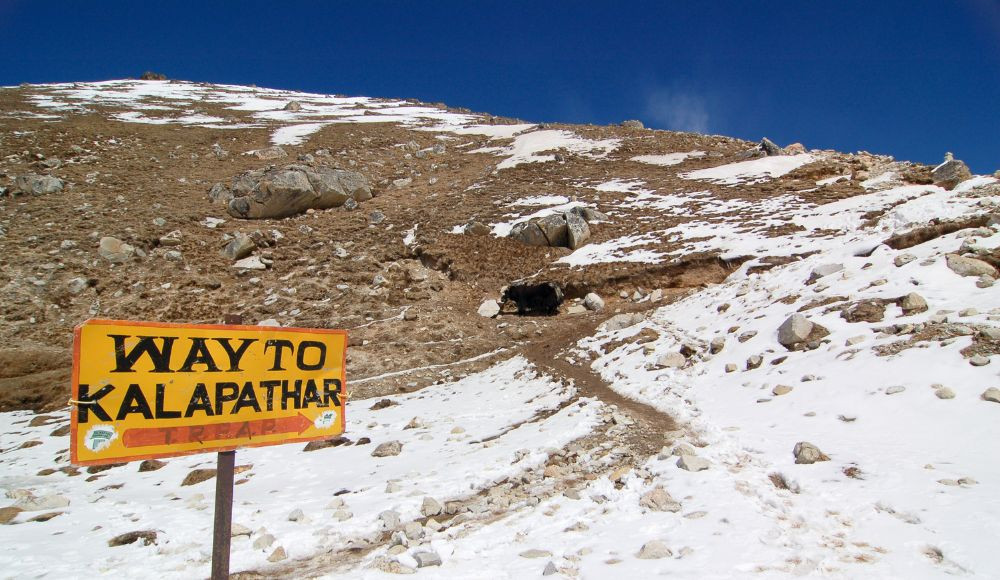
So early breakfast in the cold and small valley of Dzongla you will be passing through the Chola pass which is quite hard. You will require a few technical skills and the use of microspikes can be helpful walking on this glacier. About 5420 meters passing through Chola pass along the barren trail will give you an amazing experience. The significant elevation crossing is always difficult but the scenery is mindblowing the whole other passes. You will stay overnight at Dragnag.
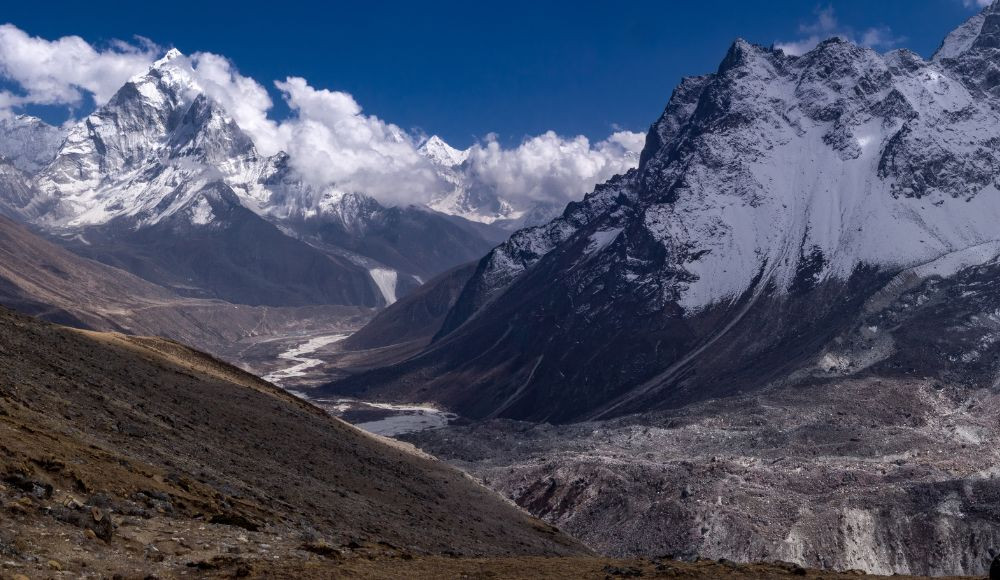
This day you will start your trek by passing by the lakes at Gokyo which pours down to the western division of Ngozumpa Glacier. You will be passing diagonally through the high lakes present and the transverse third lake Dudh Pokhari on the east bank where you can mark the territory of the Gokyo community. You will stay overnight at Gokyo.
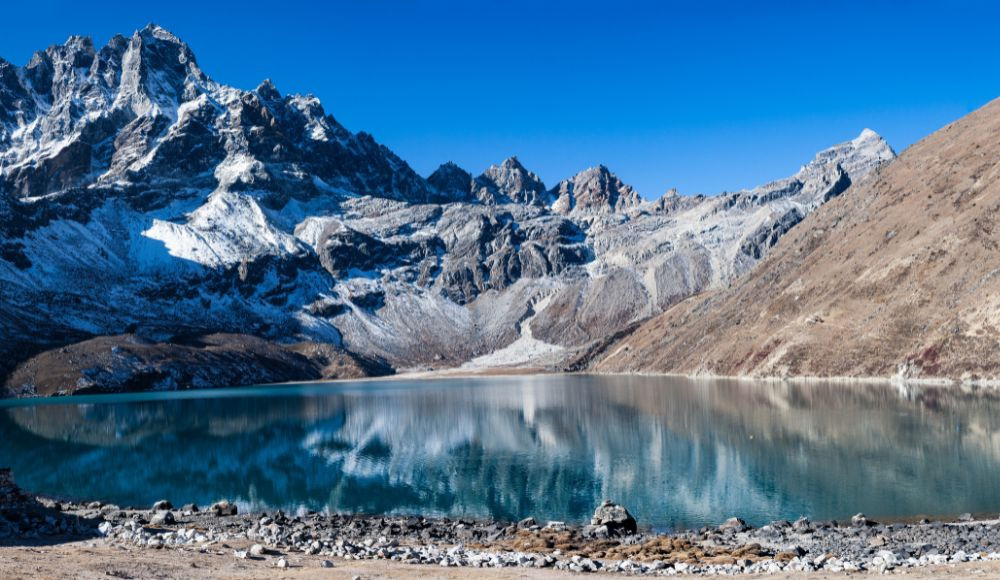
The village of Gokyo, where you will have your breakfast, is located before you go to Gokyo Ri (5360 m). The climb to the top takes about 4 hours, but it's well worth the effort since you'll be able to enjoy one of the best views of Everest, Makalu, Cho Oyu, and Lhotse.
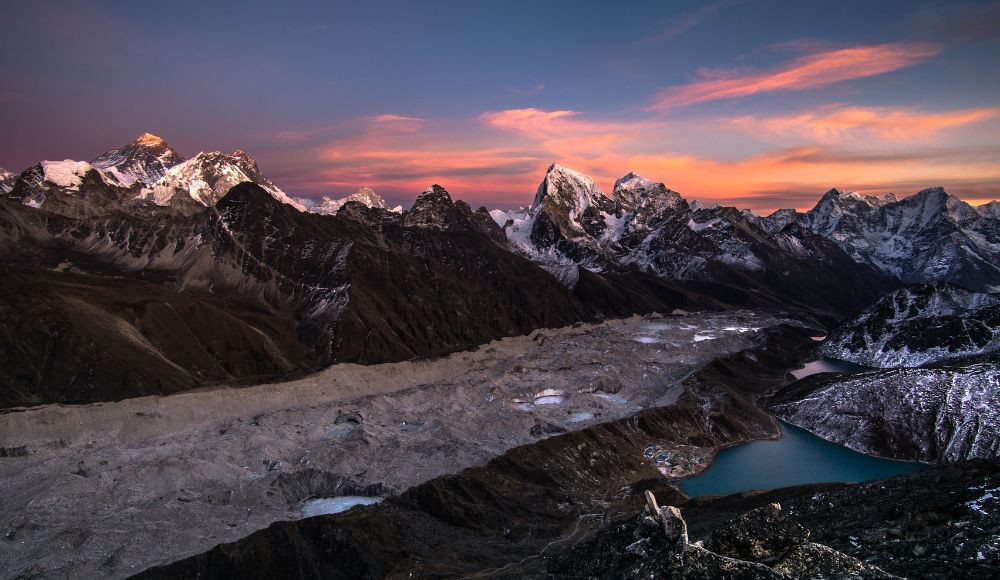
Gokyo is breathtaking. The two words "Heaven" are enough to capture its splendour. With the calm provided by snow-capped mountains encircling the lakes, it should suffice as a close approximation.
Today will be the final pass day. You will be reaching Renjo la pass (5360 m ) which is one of the most beautiful among these high passes. The 360-degree view of Rolwaling and the Khumbu.
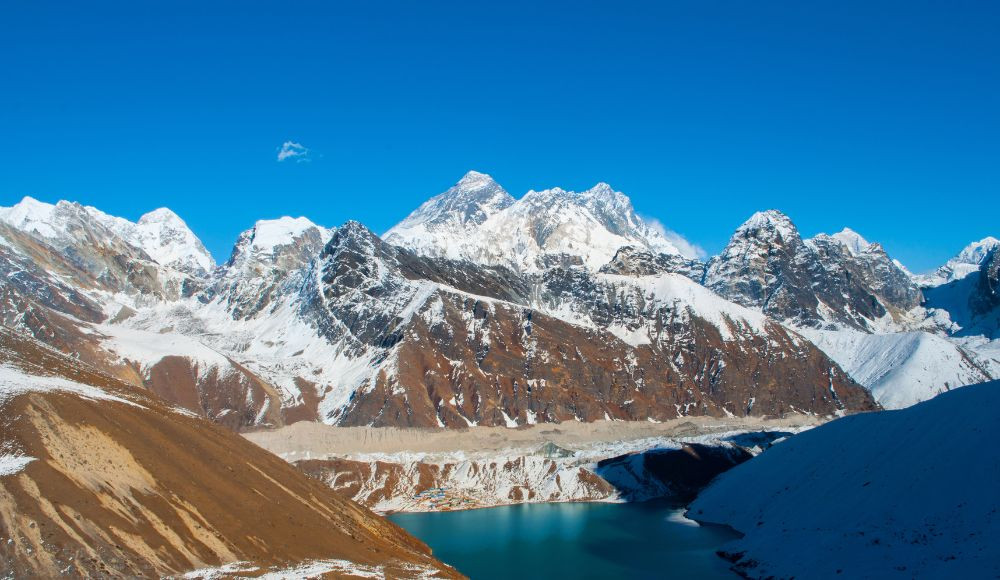
You will start early in the morning and reach the pass before the strong wind and clouds start to build up. The scenic view of Ngozumpa glacier, upper Gokyo valley, and some of the more fantastic peaks include Everest, Lhotse, Makalu, Nuptse, Cho-Oyu, and Gychung Kang. After the pass, you will descend towards Lunde village where you will stay overnight.
You will trek from Lungde village passing through Thame which is one of the highest numbers of Everest summits. By exploring the monastery and Buddhist culture you will move forward towards Namche Bazaar where you will stay overnight.
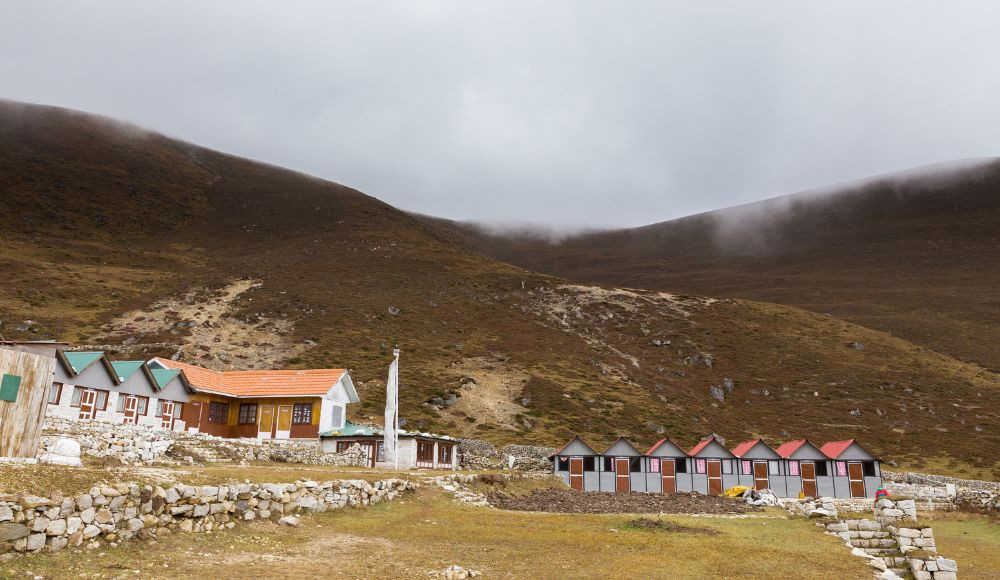
The trek to Namche Bazaar will conclude today and you will descend further to reach our last stop on the journey, Lukla. Stay in Lukla overnight.
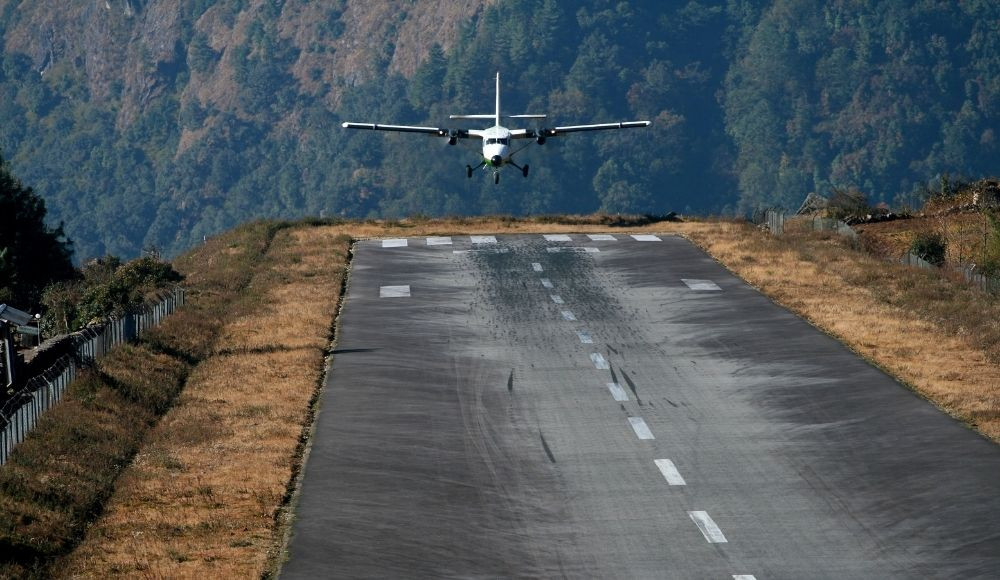
On this day you will fly back to Kathmandu. You will have a Nepali supper with us in Kathmandu before heading out shopping.
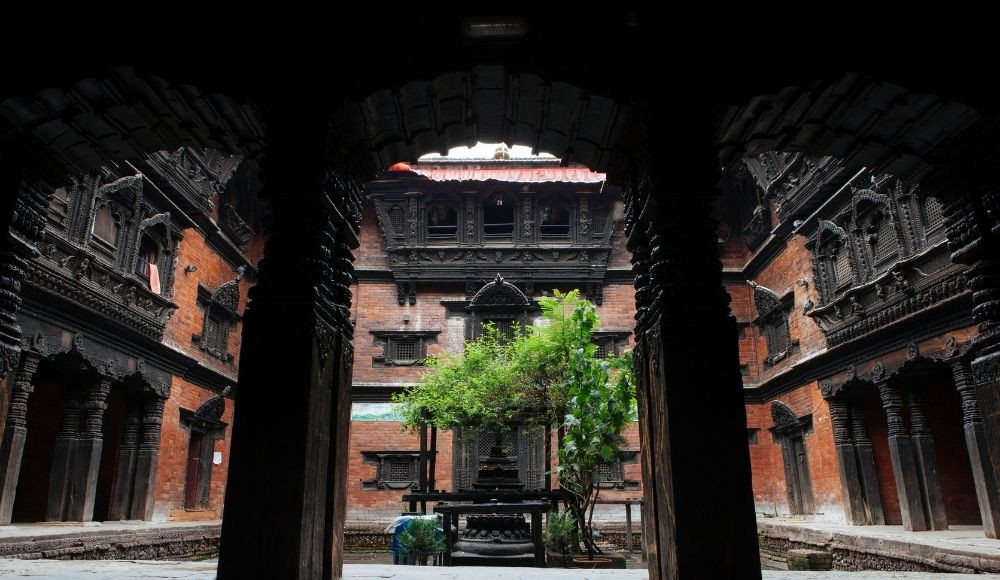
This is a customized itinerary for the short and pleasant exploration of Everest base camp along with the two beautiful passes. Take note that this itinerary can also be customized which is done by our company experts. Feel free to help you make a customized tailor-made itinerary.
|
Day 1 |
Flight to Lukla and trek to Phakding. |
|
Day 2 |
Trek From Phakding to Namche Bazaar. |
|
Day 3 |
Acclimatization in Namche Bazaar. |
|
Day 4 |
Trek from Namche Bazaar to Dingboche. |
|
Day 5 |
Trek from Dingboche to Lobuche. |
|
Day 6 |
Trek from Lobuche to Gorak Shep. |
|
Day 7 |
Trek from Gorak Shep to Kala Patthar reaching Dzongla. |
|
Day 8 |
Trek from Dzonglha to Dragnag via Cho La Pass. |
|
Day 9 |
Trek from Dragnag to Gokyo. |
|
Day 10 |
Gokyo lake exploration. |
|
Day 11 |
Trek from Gokyo to Lungden via Renjo-La Pass. |
|
Day 12 |
Trek from Lunden to Namche Bazaar. |
|
Day 13 |
Trek from Namche Bazaar to Lukla. |
|
Day 14 |
Flight from Lukla to Kathmandu. |
Exploring the panoramic and scenic mountain view away from the bustle and hustle of the city and having fun in nature. You might only think that three pass trekking will give you the experience of a lifetime. But wait, there is much to do on this trip. From narrow escaped and hazardous path to the world's highest mountain, you'll have to face an array of new challenges along the way. Exploring all the culture and traditions the list goes on and on so without any further ado let me take you on the short trip to Everest base camp along the three passes route.
Taking a thrilling and daring flight of 45 minutes from Kathmandu to Lukla will begin the trek that will take you to Namche Bazaar. The Everest and Khumbu region boast a wide range of attractions. There are many interesting facts associated with the legendary Everest as well.
You have one day to enjoy the lovely Namche Bazaar from visiting the souvenir shop, which offers a wonderful item to add to your collection. Hiking for just 10 minutes from Namche to Everest view tower will allow you to relax and take in the fresh air while enjoying your breakfast and seeing Mount Everest.

The Namche Bazaar entrance is greeted by a magnificent fountain. Make sure to pay a visit to the Sherpa Culture Museum during your morning trek and lunch. It is also the home of the informative Sherpa Culture Museum, which is a great place to acclimatize and watch the village's daily activities. It is the ideal location to get a feel for Sherpa's history through the ages, with its reconstruction of a traditional Sherpa home and displays of ancient relics and everyday items. The home includes a family room, prayer room, stable, and yard, showcasing the complete picture of traditional Sherpa life, from the domestic to the spiritual.
A museum and a research centre connected to it – which includes a library, a conference hall, and a collection of papers pertaining to the study of Mount Everest – from an important research facility for individuals interested in learning more about this unique and beautiful culture as well as helping to collect and share information about the Himalayan region in general.
So after having all the fun in the Namche it will be time to move forward in your journey. Observing the flowing river along the trails you will be getting towards the monastery in Tengboche and Dingboche where you will take a few minutes to relax and find peace for yourself.
This route will take you towards the Sagarmatha national park so make sure to observe all the flora and fauna which glorifies the national park and its beauty.
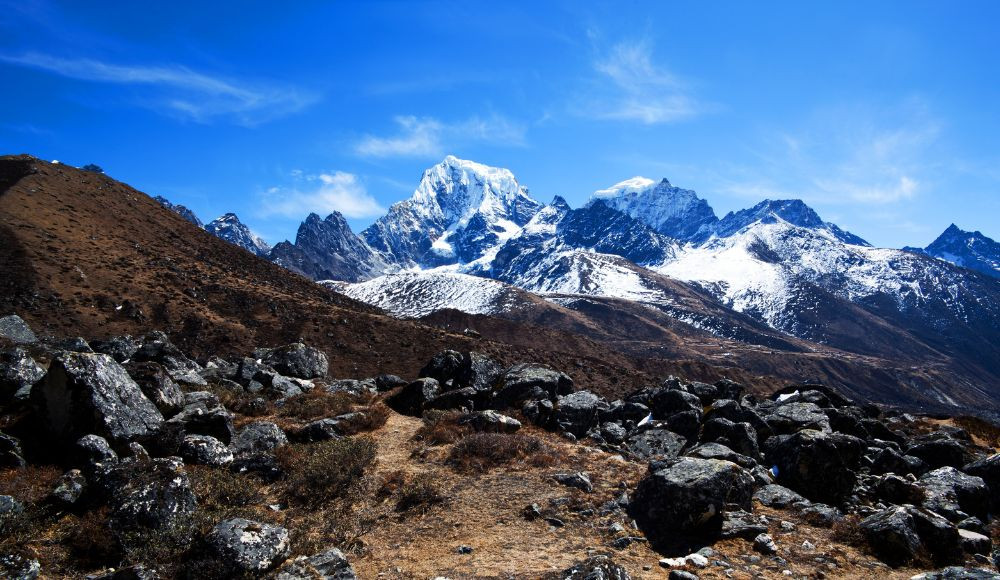 The buffer zone, which covers the temperate to rival zone and is rich in floral and faunal diversity, lies between two tundra zones. The blue pine and hemlock forests can be found at lower altitudes of the park, as well as Rhododendron scrub. Alpine plant communities are common at higher elevations, such as silver fir, Juniper, and birch. This region contains over 865 species and 64 unique species, which is globally significant.
The buffer zone, which covers the temperate to rival zone and is rich in floral and faunal diversity, lies between two tundra zones. The blue pine and hemlock forests can be found at lower altitudes of the park, as well as Rhododendron scrub. Alpine plant communities are common at higher elevations, such as silver fir, Juniper, and birch. This region contains over 865 species and 64 unique species, which is globally significant.
This region has a small number of mammalian species because it is Himalayan in origin and is frequently cold. There are eight reptiles, seven amphibians, and thirty invertebrate species in the region that are at risk of going extinct. Two hundred and nineteen species of birds have been identified in this area, including the beautiful crimson face Snow Cock.
Make sure you do not harm the flora and fauna and observe this beautiful vegetation, making them one of the memorable parts of your journey.
The Kongma La Pass, which marks the route to base camp, is a stunning and difficult three-pass route. Passing through Kongmo la will be your first stop, where you'll see all of the gorgeous prayer flags and chorten as well as a magnificent view of Makalu.
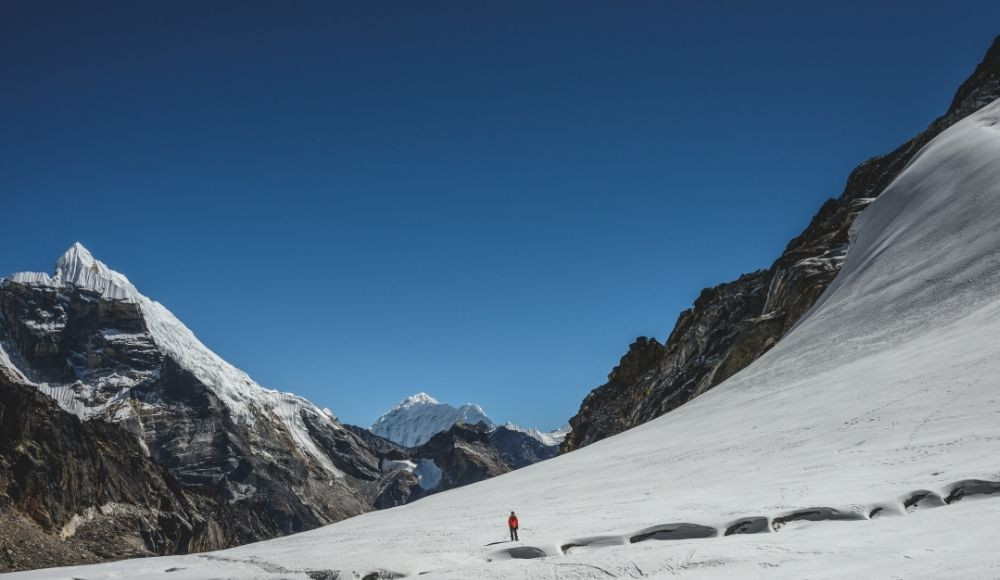 The Cho La pass is the next stop, where you'll reach after Kala Patthar. This stretch of road is the most difficult and offers the finest view of Everest and Ama Dablam with fresh air. The Renjo la Pass, which is the most accessible pass, provides a breathtaking perspective of Cho Oyu and Everest.
The Cho La pass is the next stop, where you'll reach after Kala Patthar. This stretch of road is the most difficult and offers the finest view of Everest and Ama Dablam with fresh air. The Renjo la Pass, which is the most accessible pass, provides a breathtaking perspective of Cho Oyu and Everest.
Although you may observe Mount Everest from various vantage points, the most spectacular and picturesque view of Mount Everest is seen from Kalapthhar. Make sure to see it as well as capture those special moments of your life.
During this trip, you will also get a chance to explore Gokyo so you might wonder what might be there in the beautiful place where Gokyo lies. Let me tell you about Gokyo lake and how I believe it may be worth considering spending some time exploring elsewhere.
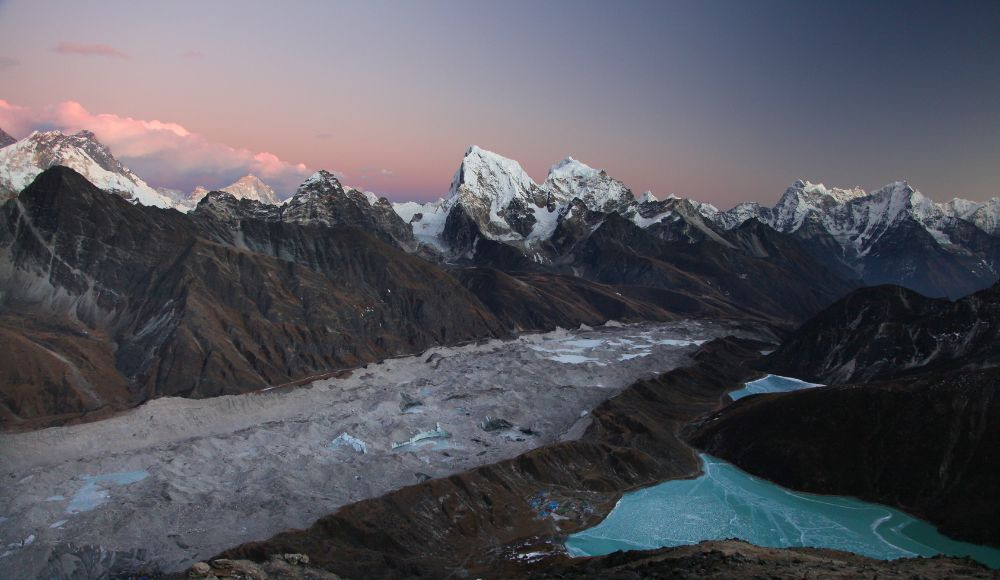 It might appear to be an amazing experience to see the world's greatest lake chain, which includes five lakes. A brief walk will take you to the lovely Gokyo Ri, which is also a tiny peak of 5357 meters. The Ngozumpa glacier and the mountains that soar into the sky are fascinating. It is preferable to go hiking early in the morning when you can enjoy the sunrises over the white mountains.
It might appear to be an amazing experience to see the world's greatest lake chain, which includes five lakes. A brief walk will take you to the lovely Gokyo Ri, which is also a tiny peak of 5357 meters. The Ngozumpa glacier and the mountains that soar into the sky are fascinating. It is preferable to go hiking early in the morning when you can enjoy the sunrises over the white mountains.
Every trekker is drawn to the natural beauty and lovely views of pleasant hills and mountains during a hike. But you might wonder how much does trekking cost in Nepal?
Everest is not a place you visit regularly. It’s a one-time opportunity to take your adrenaline level up and fulfil your adventure dream. Yeah, this trek is moderately hard but when it comes to exploring mountains and the scenic views with an exploration of beautiful glaciers, and valleys makes it worth it.
It can cost anywhere from 2099$ to 4999$ depending on your lodging and other facilities. This expenditure is not set in stone; rather, it varies with the market. Porter to guide and food might be costly in some areas, but it is usually inexpensive and accessible.
So till the Namche region, you will be able to access all the facilities which can also be quite expensive. Because the trek is quite challenging, you may wish to get insurance to guarantee your safety. The trip to Everest will be more expensive, but it will not be any more so than an expedition. However, the expense will be worthwhile given the memories you will make on top of the world.
This also makes a great place to make your trekking journey successful as it is necessary to take permits in different places for trekkers. For this, trekkers have to pay a certain amount of money to the Nepal Government to explore and trek Everest base camp.
The trekker's information management system permit is not required for the Everest base camp trek. However, the Gokyo permits are needed for the Everest high-pass trek. To obtain both permits, you'll need to notify your passport information. Porters' and guides' permissions should be obtained separately.
This is required to get into the Everest region, and it must be obtained in Lukla. However, if you begin your journey from Phaplu, you must carry it with you. Foreigners and SAARC nationals pay the same amount as NRN citizens.
The cost is NPR 2000 per person for the first four weeks. But if you plan to stay for more than four weeks the price increases up to 2500. VAT is not applicable at this price.
You will need to take this permit from Sagarmatha National Park Gate at Monjo and the cost ranges differently for both foreigners and Saarc citizens. The price range is given below;
|
Foreigners |
SAARC |
Nepali |
|
3000 Rs with 13% VAT |
1500 Rs with 13 %VAT |
100 Rs with 13% VAT |
During the peak season the crowd of people might be long so you might have to wait for a long period of time. So you can avoid the hassle by taking a permit from Kathmandu.
The saying ‘it's too difficult to trek Everest’ has long since become outdated. Even though being at the top of the world and taking in all the lovely vistas may be a dream for most people, it is possible with hard work, perseverance, and patience.
The frozen trail ranges at the tallest point and takes in all the magical flora and fauna of Sagarmatha National park. The pleasant scenery and vegetation can make you overwhelmed but those narrow exposed and unstable paths, precarious bridges, rockfalls and hazardous river crossing may be encountered. This area is prone to High Altitude Sickness and trekkers may feel dizziness and experience several other symptoms as well.
This trekking route takes you through high passes on Mount Everest, one of which is the Chola pass, and you may need technical skills as well as microspikes to complete it safely. This trek ranges from 3500 to 5000 meters at height of elevation so one must make sure of acclimatization.
The Everest high-passes trek is a moderately difficult hike that takes trekkers through some of the most beautiful scenery in the world. The passes included in the trek are the Renjo La, Cho La, and Kongma La which offer stunning views of Mt. Everest and the surrounding other 53 peaks.
Thinning glaciers and the formation of supraglacial ponds and enormous glacial lakes will limit access to glacier surfaces, causing major changes to trekking trails in the region. But make sure you are well equipped and well trained before starting the trek. This can reduce your difficulty on some level.
What you'll see along the way - glaciers, mountains, villages, and more!
Nepal attracts a handful of trekkers from hardcore trekking routes to those unwanting to unwind from the ramble from one another teahouse. Everyone coming to the lap of the mountains seems to come away from the country with their own handfuls of experiences. The mountains are all magnificent, but they lack the comforts of home and automobiles will be thrilling, breathtaking, and difficult to drive. You'll be challenged to form a lifelong buddy and assist the economy as well.
From Lukla to the high-pass region via Gokyo, this trek has a bagful of attractions along its path which can take you to a divine experience. So you will start your trek from Lukla along the way. You get to chat with the locals and greet them with ‘Namaste’ which means hello. Along the way, you will get to visit different monasteries where monks are praying. Observing the prayers will level up the silence and peace.
Yeah and do not forget to know the proper way to rotate the mani wheel. These wheels are considered to take negative and bad karma away from you. It might be better if you also chant Om mani Padme Om along with the rotation of the bell. You can also see the creativity of people along your way where the Mani wheel is water-powered in Tengboche.
Getting surprised by paving the way against the Himalayas you can observe superhumans carrying loads of more than 50 kg on their backs. Yak, the mode of transportation of the Himalayas can also be seen helping local people. The scenic 360-degree views of Everest, Ama Dablam, Lhotse, and Cho Oyu along with Tibetan ranges Changtse, Nuptse, and 53 other peaks can be observed.
At the Kongma La pass, we will have a view of Makalu and Renjo La pass is the most beautiful among the high passes that offer views of Cho Oyu and Everest. The Cho-Ola Pass is one of the most difficult yet rewarding peaks to climb in the Himalayas. The glacier that led up to the pass was like a glittering shawl draped over Kangsung's saddle.
Gokyo Lake and the surrounding area offer a spectacular view of snow-capped mountains with rural life and Buddhist culture. Ngozumpa Glacier where you will observe the wasteland of rock and ice and also the biggest glacier in the region. Also do not forget to climb the Gokyo Ri for a much better view of Everest.
The alpine environment, as well as Sagarmatha's flora and fauna, will add to the appeal of your journey. Namche and its Sherpa Museum, as well as the Everest summiteers gallery in Namche, are wonderful places for a day of acclimatization. The highest hotel is also known as Everest viewpoint, which sits at an elevation of 3,719 meters above sea level.
Related Article: Best Treks in Everest Region
Now you might be more eager to know when will be the right time to pack your bags and start your trekking journey. But first, make sure to know about the best time to visit the Everest base camp to make your experience much worth it.
So most people consider going during April and May but let me tell you that this is also the expedition month so it will be quite crowded up there. Let me tell you in detail what will be there during the four different seasons up there;
Summer lies between Late May to August. During this time the temperature is warm and the trails are really good. You will not have to face much wind and storms in the Everest region. The air is warm and clear, the days are long and the views are majestic.
However, the pristine region consists of temperatures ranging from -21 to -19 degrees celsius which is also pretty cold. This is the ideal time for your trekking along with enjoying the scenic and panoramic view of mountains and peaks. Keep in mind that this is the time for the Everest expedition too so there will be quite a crowd in the base camp.
Winter season occurs from late November to February which is rain-free and clear. The place at higher elevation faces snow and windstorms making the trail quite slippery. In the winter, there are fewer people and it’s less crowded than in the summer. The vistas are just as magnificent, although the temperature is freezing giving rise to storms as well.
The temperature during winter reaches - 40 to -50 degrees celsius when severe storms arrive; these ranges tend to persist into the winter as well. This can also cause the condition of frostbite if your body parts are exposed for more than 30 minutes. Since wearing no clothing generates heat, you will only be able to appreciate full-blown Hypothermia if your clothes are not covering it.
This season is also one of the considered seasons for trekking the glacier trails. The temperature ranges from -5 to -12 degrees Celsius and this month lies between October to November. This is also the post-monsoon season therefore climbers may get the effect of monsoon.
The trail is not so crowded and the glaciers are frozen. But sometimes a storm with a speed of 40 mph might hinder your way. But the views are much more pleasant and magnificent with a temperature milder than summer and comfortable for trekking. The fall colours are also beautiful making the trail even more beautiful and memorable.
Yeah so this is the perfect season for trekking Everest base camp. But why this season? Trekking during this season is one of the most popular choices for conquering the Everest base camp. From observing the scrutiny beauty of Everest and other peaks without the crowds and the coldest temperature of winter.
The springtime also provides perfect weather conditions for trekking with warmer days and colder nights. This is the time when the snow has melted and the trail has become less slippery making it easier to follow. But make sure to go early in the spring season so that you will have a faceless crowd.
While trekking and travelling to the Everest base camp, it is critical to be aware of your surroundings. You must be ready to push yourself to new heights. However, given that you must put your safety first. There are a variety of issues you may want to know ahead of time, such as dealing with high
The approach to the mountains and reaching your desired destination will make all the risks worth it. Make sure you are well prepared for all the hardships and risks. Something you might wanna consider are given below which makes trekking safe and life-enhancing;
Even hitting the jackpot requires a long time and the main key is to be patient and keep going. A successful multi and interdisciplinary scientific expedition can be a difficult task that necessitates a great deal of knowledge, wisdom, and trial. In certain circumstances, the expedition planning process is tedious, routine and formulaic.
Trauma, musculoskeletal and soft tissue injuries, upper respiratory infections, and diarrhoea are the most common diseases in the mountains. These health issues need to be handled with the help of medical expertise which can not be found so make sure to have a backup for a first aid kit.
The health and physical hazard is handled by an adventure provider, but the psychological and emotional risk might be disregarded or incorrectly matched. Ironically, these hazards are given less weight owing to the threat of a serious consequences. Trekking components are a combination of elements that include both skill and stress management, making it appear simple but the danger is present in each route.
The temperature ranges from 22 degrees at the height of summer and negative 5 degrees during the winter.
It is a moderately difficult trek but with the scenic views along with culture exploration it is worth taking a risk.
One of the most wonderful things about this trek is you can not only observe Everest but also the scenic view of the other 53 peaks so make sure to keep an eye on it.
It ranges from about 5364 meters above sea level.
This might take about sixteen to seventeen days depending on your trip and other factors.
Yes a beginner can join this trek but make sure you achieve the fitness level required for this trek along with mental fitness.
Since it is a moderately difficult trek with a daily walk of 5 to 6 hours you will surely be burning some fats from your body.